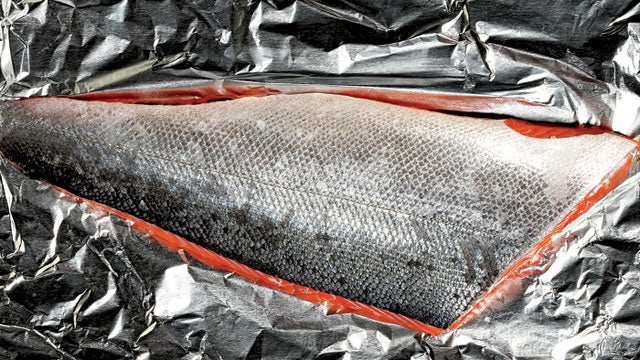One of the central principles of competitive endurance exercise is that . Extend this to high-volume, high-intensity training and the need for a high-carb diet to sustain daily training seems self-evident. However, there is a lot of enthusiasm for the so-called Paleo Diet which is low-carb and to which a number of serious athletes subscribe.
How are endurance athletes sticking to the Paleo Diet and is there something to low-carb endurance training?
The Paleo Narrative
The big idea behind Paleo is that many of the chronic diseases of the modern world like diabetes, obesity, and heart disease are a result of high carbohydrate intake. According to the narrative, prior to the our hunter-gatherer ancestors ate diets high in animal protein. They also collected nuts, fruits and vegetables. So, if we just turn the clock back and eat a low carbohydrate diet like they did, chronic disease would more or less go away. The Paleo Diet is popular, but it's just the most recent in a long line of low-carb diets that work, mainly because .
��
Paleo is also an interesting story that sound great, but there are holes in just about every element of the narrative. One of the largest ones is that all “Paleo people” shared the same diet.
Low-Carb Training?
Even if the Paleo narrative is flawed, its adherants may be on to something. One of the forgotten classics in exercise physiology is a study done in the early 1980s when five well-trained cyclists spent four-weeks on an ultra-low carbohydrate diet and :
…the mean ergometer endurance time for continuous exercise to exhaustion at 62%-64% of VO2max was 147 minutes at EBD-1 (after high carb diet) and 151 minutes at EKD-4 (after low carb diet). The steady-state RQ dropped from 0.83 to 0.72 (P less than 0.01) from EBD-1 to EKD-4. In agreement with this were a three-fold drop in glucose oxidation (from 15.1 to 5.1 mg/kg/min, P less than 0.05) and a four-fold reduction in muscle glycogen use (0.61 to 0.13 mmol/kg/min, P less than 0.01). Neither clinical nor biochemical evidence of hypoglycemia was observed during EKD-4. These results indicate that aerobic endurance exercise by well-trained cyclists was not compromised by four weeks of ketosis. This was accomplished by a dramatic physiologic adaptation that conserved limited carbohydrate stores (both glucose and muscle glycogen) and made fat the predominant muscle substrate at this submaximal power level…
The cyclists adapted to a very low-carb diet and could go a long time without many carbs. This study suggested that a long period of low-carbs might increase the ability of the muscles to burn fat. This may sound like a minor point, but this strategy might ultimately allow athletes to save their glycogen stores for when they were most needed, potentially providing a race-winning boost. showing about 10 days of a high-fat, low-carb diet improved performance when carbs were fed for three days prior to a long ride followed by a 20k time trial:
The HFD-CHO (High fat followed by carbs) diet increased total fat oxidation and reduced total CHO oxidation but did not alter plasma glucose oxidation during exercise. By contrast, the estimated rates of muscle glycogen and lactate oxidation were lower after the HFD-CHO diet. The HFD-CHO treatment was also associated with improved TT times (29.5 +/- 2.9 min vs. 30.9 +/- 3.4 min for HFD-CHO and CTL-CHO (control diet). High-fat feeding for 10 days prior to CHO-loading was associated with an increased reliance on fat, a decreased reliance on muscle glycogen, and improved time trial performance after prolonged exercise.
There have been a number of additional studies showing more fat and less carb use during exercise, though not all of them show an improvement in high-intensity performance. Taken together, these studies lead to the concept of “dietary periodization” for endurance athletes with the goal of increasing fat utilization and making glycogen stores last longer.
One such strategy is “fat adaptation”, an intervention in which well-trained endurance athletes consume a high-fat, low-CHO (CHO=carbohydrate) diet for up to 2 weeks while undertaking their normal training and then immediately follow this by CHO restoration (consuming a high-CHO diet and tapering for 1-3 days before a major endurance event). Compared with an isoenergetic CHO diet for the same intervention period, this “dietary periodization” protocol increases the rate of whole-body and muscle fat oxidation while attenuating the rate of muscle glycogenolysis during submaximal exercise. Of note is that these metabolic perturbations favoring the oxidation of fat persist even in the face of restored endogenous CHO stores and increased exogenous CHO availability.
Implications for Paleo Athletes
While the mainstream literature supporting the Paleo Diet is scarce, the principles outlined above provide some food for thought for those following a Paleo regime who also compete in endurance sports:
- We don't know if you can do really high-volume, high-intensity training for months or years on a low-carb diet. You might need a least some carbs a few days a week if you intend to do high-intensity traditional interval training. If you are more or less chronically bonked from no muscle glycogen the quality of your training and ultimately you conditioning might suffer. For these reasons make grudging exceptions for hard-core endurance athletes.
- The studies reviewed above were well controlled and the subjects were monitored. Take it slow if you want to cut your carbs. Hitting the wall and bonking are no fun.
- Eat carbs prior to competition and practice any eating or drinking strategies outside of competition. There is a lot of individual variability in how humans respond to dietary changes, find out what works for you. ��
I am a skeptic about diets and fully expected to write a post saying that training while on a low-carb diet (including Paleo) was nuts. However, the data speak for themselves and dietary periodization is another nutritional tool for those who want to go faster and farther in competition.
Michael J. Joyner, M.D., is a physiologist and anesthesiologist at the Mayo Clinic and a leading voice in the world of exercise physiology. Over the past 25-plus years, he's published hundreds of studies, many of which have focused on how humans respond to exercise. Dr. Joyner also writes at��. The views expressed in his posts are his own and do not reflect those of his employer.


